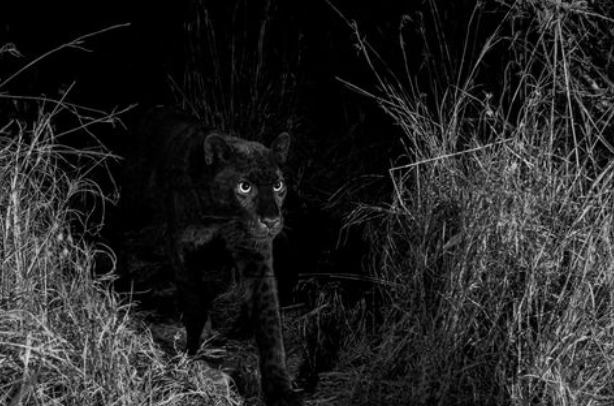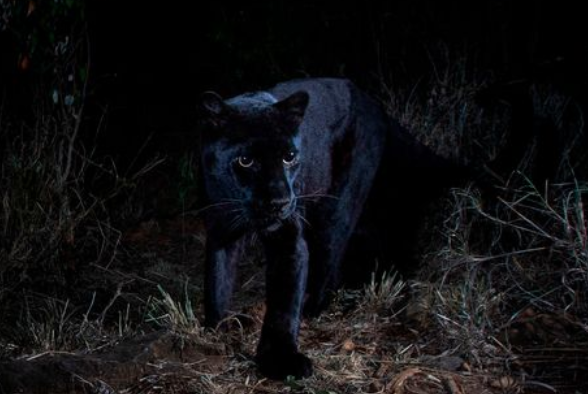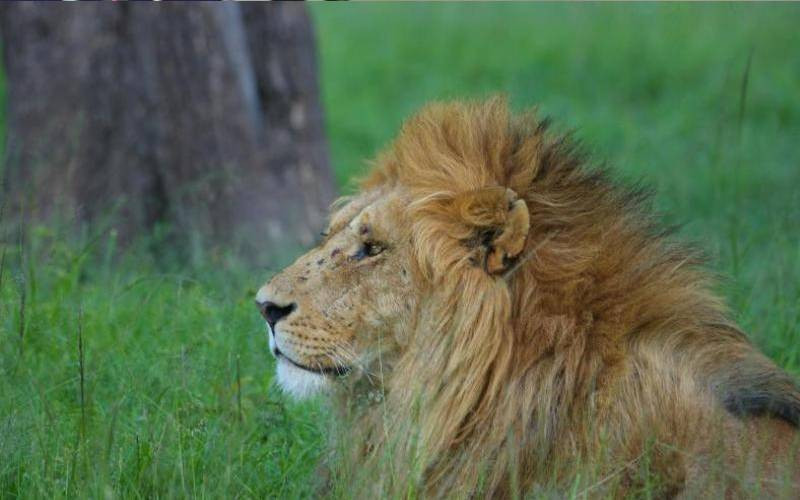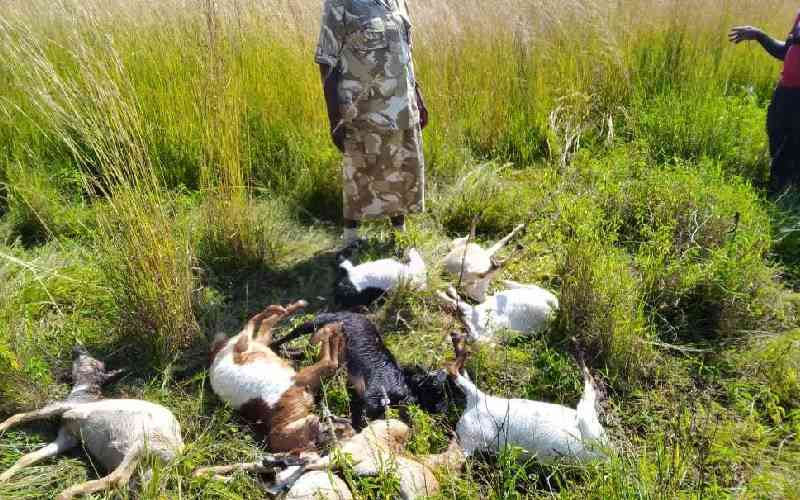
Researchers at San Diego Zoo Global and Loisaba Conservancy have confirmed the presence of a rare black leopard living in Laikipia County, a first in 100 years.
In the Confirmation note and record published in the African Journal of Ecology on January 29, this year, the researches confirmed the existence of rare black leopards that primarily occur in South East Asia and a few in Africa. The sighting was a first in 100 years, according to researchers.
The researchers captured on camera the rare female black leopard in separate incidences between February and April 2018 in Loisaba Conservancy in Nanyuki, pictures that have since gone viral, also with the Kenya Wildlife service confirming them.
Led by San Diego Zoo Global biologist Dr Nick Pilfold, the team of researchers deployed a set of camera traps throughout the bushlands of Loisaba Conservancy in early 2018 following unconfirmed reports of the sightings.
“Camera recorded a sub-adult female black leopard on February 16, 18, March 11, March 15, and April 2018 at five different camera locations. Four of the five videos were captured at night with infrared illumination allowing for the confirmation of the rosette patterns,” the confirmation note read.
In Kenya, the researchers said, reports on existence of black leopards, are known, but neither scientific confirmation nor photographic evidence has supported this before.
“Here, we provide photographic evidence for existence of black leopard in Laikipia County, Kenya. We also compare the habitat of these sightings to the expectations of melanism as an adaptive trait, driven by environment,” the paper reads.

Videos of February 28 and March 11, the researchers recorded, were captured near artificial water resources including one video of drinking suggesting that the points were important during the dry season.
In all of night videos, the black leopard appeared alone. The recordings further shows the black leopard carrying a prey on April 14.
The researchers note that melanin, is an opposite of albinism and occurs as a result of a gene that causes a surplus of pigment in the skin or hair of an animal so that it appears black.
Due to their high iconic and high frequency of melanin, melanistic leopards are often referred as ‘black panthers’ and have been reported in and around Kenya for decades, but scientific confirmation of their existence remains quite rare, according to researchers.
Black panthers are however, simply melanistic variants of leopards meaning, a commonly coloured leopard can give birth to a black leopard and vice versa. ‘Black panthers’ are not a separate species of leopards. Asia, however have high populations of melanistic leopards.
According to Wikipedia, a black panther is the melanistic colour variant of any big cat species. Black panthers in Asia and Africa are leopards and those in the Americas are black jaguars.
Stay informed. Subscribe to our newsletter
"Almost everyone has a story about seeing one, it's such a mythical thing," says Dr Pilfold, of San Diego Zoo Global's Institute for Conservation Research.
A 2012 research published at the Public Library of Sciences, PLOS, however reveals that the occurrence of melanism is caused by a gene which regulates the distribution of black pigment within the hair shaft.
The case is most common and well known in leopards, which live in Asia and Africa, and jaguars, inhabitants of South America.
“In the cat family melanism is quite common, having been reported in 13 of 37 species .Although such darkened pelage reaches considerably high frequencies in some cat species, still little is known about its evolutionary history and ecological/behavioural significance,” the research published at plos.org notes.
Dr Pilfold noted that the fact the young female was traveling with her mother also suggests that her unique coloration has not had an impact on familial bonding
There are seven different sub-species of Leopard which differ in their appearance and geographic location, with the African Leopard being the most common and widespread and the others being the rare Amur Leopard, the Anatolian Leopard, the Barbary Leopard, the Sinai Leopard, the South Arabian Leopard and the Zanzibar.
 The Standard Group Plc is a
multi-media organization with investments in media platforms spanning newspaper
print operations, television, radio broadcasting, digital and online services. The
Standard Group is recognized as a leading multi-media house in Kenya with a key
influence in matters of national and international interest.
The Standard Group Plc is a
multi-media organization with investments in media platforms spanning newspaper
print operations, television, radio broadcasting, digital and online services. The
Standard Group is recognized as a leading multi-media house in Kenya with a key
influence in matters of national and international interest.
 The Standard Group Plc is a
multi-media organization with investments in media platforms spanning newspaper
print operations, television, radio broadcasting, digital and online services. The
Standard Group is recognized as a leading multi-media house in Kenya with a key
influence in matters of national and international interest.
The Standard Group Plc is a
multi-media organization with investments in media platforms spanning newspaper
print operations, television, radio broadcasting, digital and online services. The
Standard Group is recognized as a leading multi-media house in Kenya with a key
influence in matters of national and international interest.











